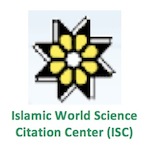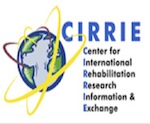


Google Scholar citation report
Citations : 5373
ASEAN Journal of Psychiatry received 5373 citations as per google scholar report
ASEAN Journal of Psychiatry peer review process verified at publons
| Journal Name | ASEAN Journal of Psychiatry (MyCite Report) | ||||
|---|---|---|---|---|---|
| Total Publications | 456 | ||||
| Total Citations | 5688 | ||||
| Total Non-self Citations | 12 | ||||
| Yearly Impact Factor | 0.93 | ||||
| 5-Year Impact Factor | 1.44 | ||||
| Immediacy Index | 0.1 | ||||
| Cited Half-life | 2.7 | ||||
| H-index | 30 | ||||
| Quartile |
|
- Anxiety Disorders
- Behavioural Science
- Biological Psychiatry
- Child and Adolescent Psychiatry
- Community Psychiatry
- Dementia
- Community Psychiatry
- Suicidal Behavior
- Social Psychiatry
- Psychiatry
- Psychiatry Diseases
- Psycho Trauma
- Posttraumatic Stress
- Psychiatric Symptoms
- Psychiatric Treatment
- Neurocognative Disorders (NCDs)
- Depression
- Mental Illness
- Neurological disorder
- Neurology
- Alzheimer's disease
- Parkinson's disease
Abstract
Health Care Worker?s Perception Survey and Psychological Distress during the Covid-19 Pandemic: An Indian Context
Author(s): Priya Mehta, Abhishek Gupta, Shikha Shah, Neha Lal and Kaushal Gandhi*Objective: Health professionals struggled with additional stress as compared to the rest of the population during the time of COVID19 Pandemic. Previous reports and current data suggest that tremendous burden led to many stress disorders among the health care workers and their long-term effects on their state of mind need to be studied to take necessary measures. This study has been designed to assess the level of stress and other psychiatric disorders among HCWs and the role of administration to overcome it. Method: This survey based retrospective study was conducted across multiple Centres and data from health care workers who were in direct contact with confirmed or suspected cases were collected and analyzed. Result: Data were compared on the basis of different parameters, i.e., category, gender, age, marital status, years of work experience per se with the degree of stress. Our study shows significant degree of stress among the healthcare workers during and post pandemic. Nursing staffs and doctors were affected significantly with higher degree of stress. Overall higher stress was observed among females as compared to the males; and among youngers and HCWs with lesser years of work experience. Conclusion: This study is the first of its kind assessing stress levels in the health care workers on every aspect in great details. Our study also observed that instead of using Headington scale to classify the degree of stress, if we can compare stress scores using different statistical tools, obtained results are more reliable and it can accurately assess the degree of stress.


























